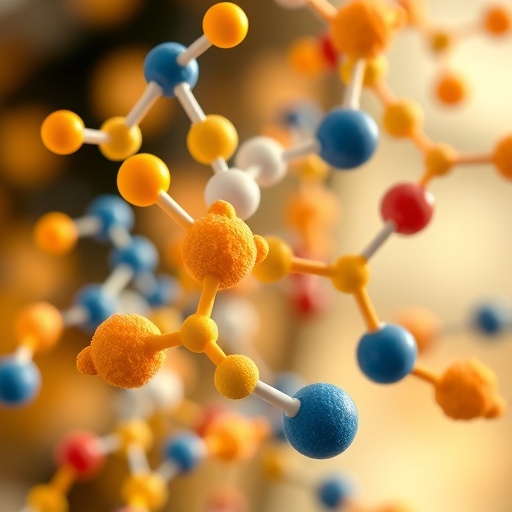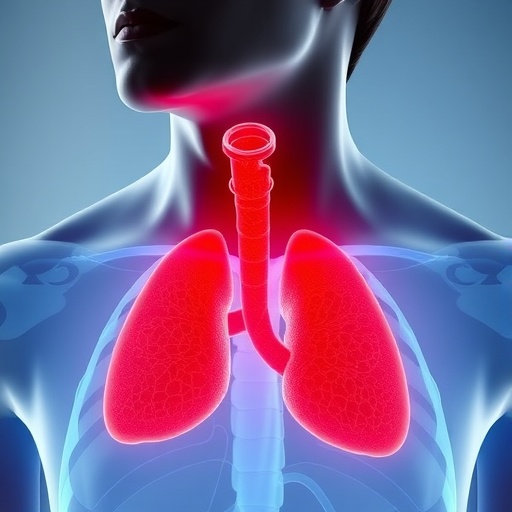In recent years, the intricate metabolic interplay within the tumor immune microenvironment (TIME) has emerged as a pivotal battleground shaping cancer progression and immune surveillance. Far beyond serving as mere building blocks for protein synthesis, amino acids have been recognized as dynamic regulators that influence both tumor growth and immune cell function. Tumors exploit metabolic pathways to outcompete immune cells for these critical nutrients, effectively reprogramming the immune microenvironment to facilitate immune evasion and resistance to therapy. This metabolic tug-of-war unfurls a complex network where amino acids like glutamine, arginine, tryptophan, and methionine transcend their traditional nutrient roles to become key signaling molecules that modulate immune responses and tumor aggression.
The tumor microenvironment operates as a tense metabolic arena where cancer cells relentlessly consume available amino acids, depriving immune cells of essential substrates necessary for their activation and survival. Glutamine, for instance, is avidly taken up by tumor cells through the overexpression of the transporter SLC1A5. This increased glutamine uptake fuels the tricarboxylic acid (TCA) cycle, supporting tumor bioenergetics and biosynthesis. Concurrently, glutamine metabolism enhances the expression of programmed death-ligand 1 (PD-L1), a crucial immune checkpoint molecule that binds PD-1 receptors on CD8⁺ T cells and inhibits T cell receptor (TCR) signaling. The consequence is a suppression of cytotoxic T lymphocyte activation and the induction of T cell exhaustion, undermining antitumor immunity at a fundamental level.
Simultaneously, the depletion of glutamine in the extracellular milieu compromises T cell metabolic fitness. T cells require glutamine to maintain TCA cycle function and to support their rapid proliferation and effector capabilities. Thus, the tumor’s monopolization of glutamine creates a metabolic void that weakens immune surveillance. This insight highlights how amino acid scarcity in the TIME does not merely reflect nutrient competition but constitutes a deliberate, tumor-driven sabotage of T cell efficacy. The dual role of glutamine in both tumor promotion and immune suppression underscores its critical position as a target for therapeutic intervention designed to restore immune competence.
.adsslot_nbsC9DFflX{ width:728px !important; height:90px !important; }
@media (max-width:1199px) { .adsslot_nbsC9DFflX{ width:468px !important; height:60px !important; } }
@media (max-width:767px) { .adsslot_nbsC9DFflX{ width:320px !important; height:50px !important; } }
ADVERTISEMENT
Arginine metabolism represents another axis exploited by tumor-associated myeloid cells to suppress immunity. Tumor-associated macrophages (TAMs) and myeloid-derived suppressor cells (MDSCs) express arginase 1 (ARG1), which catabolizes extracellular arginine, a critical amino acid for T cell activation and proliferation. The depletion of arginine in the TIME impairs T cell receptor signaling and proliferation, effectively blunting immune responses. Additionally, the production of nitric oxide (NO) by these cells further contributes to immunosuppression. Regulatory T cells (Tregs) secrete immunosuppressive cytokines such as interleukin-10 (IL-10) and transforming growth factor-beta (TGF-β), reinforcing the immunosuppressive milieu and sustaining tumor tolerance.
The interplay of amino acid sensing pathways underpins how immune cells detect and respond to metabolic stress within the TIME. Key sensors such as the mechanistic target of rapamycin (mTOR), AMP-activated protein kinase (AMPK), and AhR interpret fluctuations in amino acid availability, triggering intracellular signaling networks that control cell survival, proliferation, and immune evasion. Newly identified molecular sensors, including mitochondrial threonyl-tRNA synthetase 2 (TARS2) and histone deacetylase 6 (HDAC6), expand our understanding of amino acid signaling and suggest novel targets for therapeutic modulation. These sensors act as metabolic gatekeepers, linking nutrient status to epigenetic and transcriptional control of immune and tumor cell behavior.
Capitalizing on this growing knowledge, innovative therapeutic strategies are emerging to manipulate amino acid metabolism and reprogram the TIME. Glutaminase inhibitors, which block glutamine utilization in tumor cells, aim to restore glutamine levels and metabolic fitness in T cells. Similarly, arginase inhibitors prevent arginine depletion, enhancing T cell activation. Dietary interventions restricting methionine intake are under investigation for their capacity to influence DNA methylation and epigenetic programming in tumor and immune cells alike. Moreover, amino acid-loaded nanoparticles offer targeted delivery systems to modulate local nutrient composition, while microbial-based therapies leverage the gut and tumor-associated microbiota to influence amino acid availability and immune responses.
Some of the most groundbreaking advances involve the engineering of immune cells with enhanced nutrient-sensing abilities or metabolic resilience. CAR-T cells optimized for amino acid metabolism exhibit improved persistence and antitumor efficacy in nutrient-deprived microenvironments. Similarly, probiotics designed to alter amino acid metabolite profiles within the gut or tumor niche represent a frontier for modulating systemic and local immunity. These approaches reflect a paradigm shift towards metabolic immunotherapy that integrates cellular programming with microenvironmental regulation.
The insights provided by the comprehensive review from Tongji University Cancer Center position amino acid metabolism as a central language through which tumors and immune cells communicate. Interrupting this metabolic dialogue presents unprecedented opportunities to overcome immune resistance and improve cancer treatment outcomes. By combining metabolic inhibitors with established immune checkpoint blockade or adoptive cell therapies, a synergistic effect can be achieved that not only halts tumor growth but also revives exhausted immune cells.
As metabolic profiling technologies become increasingly sophisticated, the prospect of personalized cancer treatment driven by metabolic phenotyping looms. Tailoring therapies to the metabolic landscapes of individual tumors and their immune microenvironments holds promise for enhancing therapeutic specificity and minimizing off-target effects. Amino acid metabolism emerges not only as a biomarker for disease progression but also as a lever for therapeutic intervention that may redefine future standards in oncology.
In conclusion, the dynamic and reciprocal regulation of amino acid availability and sensing profoundly shapes the tumor immune microenvironment, influencing tumor progression, immune suppression, and therapeutic response. Continued research in this field is vital to unravel the molecular intricacies of metabolic competition and to translate these findings into innovative, effective cancer therapies. The expanding toolkit of metabolic and immunologic interventions heralds a new era in which harnessing amino acid pathways may unlock the full potential of antitumor immunity and improve patient survival worldwide.
Subject of Research:
Not applicable
Article Title:
Amino acids shape the metabolic and immunologic landscape in the tumor immune microenvironment: from molecular mechanisms to therapeutic strategies
News Publication Date:
24-Jul-2025
Web References:
https://www.cancerbiomed.org/content/early/2025/07/24/j.issn.2095-3941.2025.0115
References:
DOI: 10.20892/j.issn.2095-3941.2025.0115
Image Credits:
Cancer Biology & Medicine
Keywords:
Tumor microenvironments
Tags: amino acids in cancer metabolismarginine and tryptophan in immunitycancer therapy resistance factorsglutamine role in tumor growthimmune checkpoint modulation by amino acidsImmune Evasion Mechanismsmetabolic competition between tumors and immune cellsnutrient deprivation in immune responsePD-L1 expression regulationsignaling pathways in tumor and immune interactionsTCA cycle and tumor bioenergeticstumor immune microenvironment dynamics





